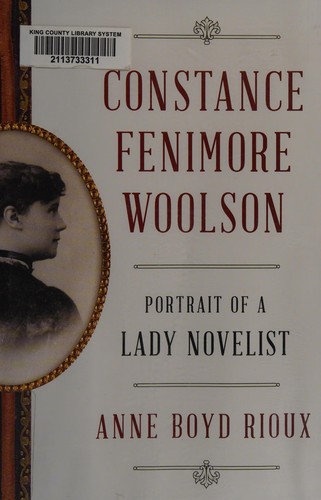391 pages
English language
Published Feb. 14, 2016

391 pages
English language
Published Feb. 14, 2016
Constance Fenimore Woolson (1840-1894), who contributed to Henry James's conception of his heroine Isabelle Archer in The Portrait of a Lady, was one of the most accomplished American writers of the nineteenth century. Yet today the best-known (and most-misunderstood) facts of her life are her relationship with James and her probable suicide in Venice. Anne Boyd Rioux uncovered new sources in writing this first full-length biography that evokes Woolson's dramatic life and reaffirms her literary stature. A grand-niece of James Fenimore Cooper, Woolson was born in New Hampshire, but her family's ill fortunes drove them west to Cleveland. Raised to be a conventional woman, Woolson was thrust by her father's death into the role of breadwinner, and yet, as a writer, she reached for critical as much as monetary reward. Known for her powerfully realistic and empathetic stories of post-Civil War American life, Woolson created compelling portrayals of the rural …
Constance Fenimore Woolson (1840-1894), who contributed to Henry James's conception of his heroine Isabelle Archer in The Portrait of a Lady, was one of the most accomplished American writers of the nineteenth century. Yet today the best-known (and most-misunderstood) facts of her life are her relationship with James and her probable suicide in Venice. Anne Boyd Rioux uncovered new sources in writing this first full-length biography that evokes Woolson's dramatic life and reaffirms her literary stature. A grand-niece of James Fenimore Cooper, Woolson was born in New Hampshire, but her family's ill fortunes drove them west to Cleveland. Raised to be a conventional woman, Woolson was thrust by her father's death into the role of breadwinner, and yet, as a writer, she reached for critical as much as monetary reward. Known for her powerfully realistic and empathetic stories of post-Civil War American life, Woolson created compelling portrayals of the rural Midwest, Reconstruction-era South, and formerly Spanish Florida. After her invalid mother's death, she moved to Europe, living mostly in England and Italy and spending several months in Egypt. While abroad, she wrote finely crafted foreign-set stories that presage Edith Wharton's work of the next generation. In this rich biography, Rioux reveals an exceptionally gifted and committed artist who pursued and received serious recognition despite the difficulties faced by female authors of her day.--Adapted from dust jacket.